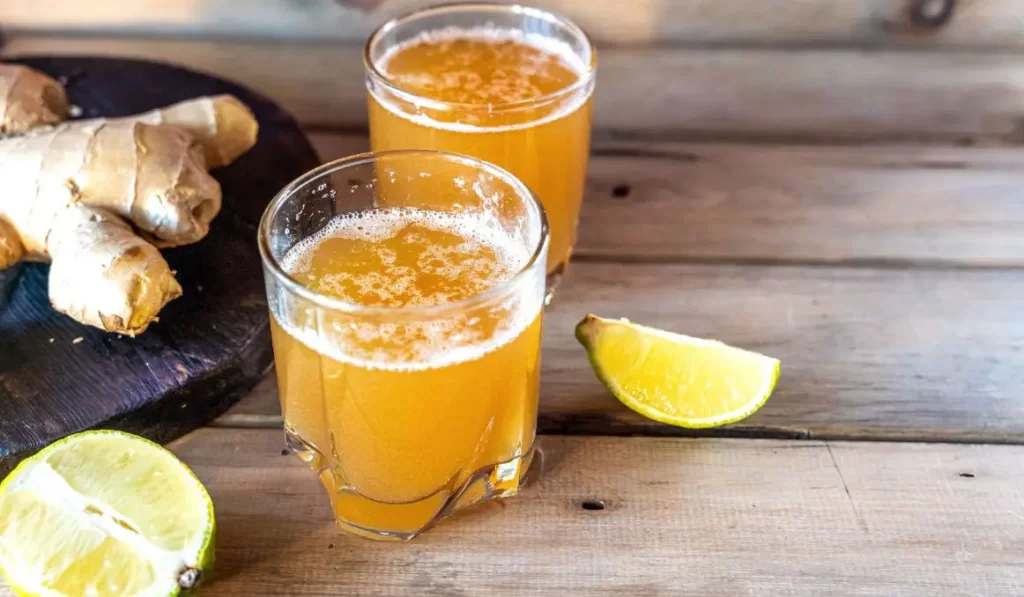Introduction
Ginger beer, a flavorful and effervescent beverage, has gained a devoted following for its unique combination of spiciness and sweetness. Despite its name, ginger beer is not a traditional alcoholic beer, but rather a non-alcoholic drink with a rich history and a distinct flavor profile.
This article delves into the captivating journey of ginger beer, exploring its origins, production process, variations, and the reasons behind its enduring popularity.
The Origins of Ginger Beer
Ginger beer’s origins can be traced back to the 18th century, when it was first created in England. Initially, ginger beer was concocted as a fermented alcoholic beverage by allowing ginger, sugar, and water to naturally ferment, producing a mildly alcoholic and bubbly drink.
However, as time progressed and consumer preferences shifted towards non-alcoholic options, the modern version of ginger beer emerged.
The Production Process
Ginger beer is crafted through a multi-step process that combines the fiery essence of ginger with the sweetness of sugar, resulting in a harmonious balance of flavors. The production typically involves the following steps:
Ginger Extraction: Fresh ginger root is peeled and grated to extract its potent flavor. The ginger is then steeped in hot water to create a ginger concentrate.
Sweetening: The ginger concentrate is combined with sugar, resulting in a syrup that contributes to the beverage’s sweetness.
Addition of Flavors: Depending on the desired variation, additional ingredients such as lemon juice, lime, or other fruits and spices might be added to enhance the taste.
Carbonation: The ginger syrup is mixed with water and often carbonated, either through natural fermentation or by adding carbon dioxide. This step gives ginger beer its signature fizziness.
Bottling and Maturation: The mixture is then bottled and left to mature for a certain period, allowing the flavors to meld and develop.
Pasteurization (Optional): To extend shelf life, some commercial ginger beers undergo pasteurization, a process that involves heating the beverage to kill harmful microorganisms.
Variations of Ginger Beer
Ginger beer has evolved to offer a diverse range of options to cater to varying tastes:
Traditional Ginger Beer: Staying true to its roots, this version retains a bold ginger spiciness with a hint of sweetness.
Craft Ginger Beer: Artisanal producers often experiment with unique flavor infusions, incorporating ingredients like hibiscus, elderflower, or even chili for a modern twist.
Spicy Ginger Beer: For those seeking an extra kick, some ginger beers emphasize the heat of the ginger, delivering a more intense flavor experience.
Flavored Ginger Beer: Fruit variations, such as raspberry or mango ginger beer, appeal to those who enjoy a fruit-forward profile.
The Enduring Popularity
Ginger beer’s popularity endures for several reasons:
Versatility: Ginger beer serves as a versatile base for cocktails, most notably in the classic Moscow Mule, Dark ‘n’ Stormy, and more.
Refreshment: Its zingy and refreshing taste makes it an excellent standalone beverage, particularly on warm days.
Health Benefits: Ginger is renowned for its potential health benefits, including aiding digestion, reducing nausea, and supporting the immune system.
Conclusion
Ginger beer, with its origins rooted in history, has transformed from an alcoholic brew into a beloved non-alcoholic beverage cherished for its exceptional taste and versatility. Whether enjoyed straight from the bottle or as a base for creative cocktails, ginger beer continues to captivate taste buds with its dynamic blend of flavors.
So, the next time you raise a glass of this zesty elixir, remember the journey that brought you this delightful concoction known as ginger beer.

